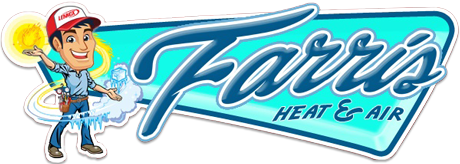
As the weather begins to cool off, you might be concerned about how you’ll prepare your heating and cooling. After all, HVAC costs can make up a significant chunk of your monthly electric bill. To try and find ways to reduce costs, some homeowners take a closer look at their thermostat. Is there a setting they could use to improve efficiency?
The majority of thermostats come with a ‘Fan’ or ‘Fan On’ setting. But if the fan is on during a normal cycle, what does the fan setting offer for an HVAC system? This guide can help. We’ll review what exactly the fan setting is and when you can use it to cut costs over the summer or winter.
Should I Use My Thermostat's Fan Setting?
For most thermostats, the fan setting means that the air handler’s blower fan keeps running. A few furnaces can generate heat at a low level in this setting, but in most cases heating or cooling isn’t being generated. The ‘Auto’ setting, in contrast, will run the fan over a heating or cooling cycle and turn it off after the cycle is complete.
There are benefits and drawbacks to trying the fan setting on your thermostat, and the ideal option {will|can|should]] depend on your personal comfort preferences.
Advantages to trying the Fan/On setting:
- You can keep the temperature throughout your home more uniform by permitting the fan to keep running.
- Indoor air quality can increase since steady airflow will keep passing airborne pollutants into the air filter.
- A smaller amount of start-stop cycles for the HVAC fan helps expand its life span. Since the air handler is usually connected to the furnace, this means you can prevent the need for furnace repair.
Disadvantages to utilizing the Fan/On setting:
- A nonstop fan could add to your energy expenses somewhat.
- Nonstop airflow can clog your air filter up more quickly, increasing the frequency you will want to replace it.
{Choosing Between|Should My Thermostat Be on|Which Setting for My Thermostat? Fan or Auto in Each Season
Through the summer, warm air will sometimes linger in unfinished spaces including the attic or an attached garage. If you leave the fan on, your HVAC system may draw this warm air into the rest of your home, compelling the HVAC system to run longer to keep up with the desired temperature. In extreme heat, this may lead to needing AC repair more often as wear and tear increases.
The opposite can happen in the winter. Cooler spaces such as a basement will hold onto cooler air, which can eventually flow into the rest of your home. Keeping the fan on could draw more cold air upward, increasing the amount of heating you need to stay warm.
If you’re still trying to decide if you should use the fan/on setting, don’t forget that every home and family’s comfort needs will vary. Leaving the HVAC system’s fan on may be ideal for you if:
Someone in your household has allergies. Allergies and other respiratory conditions can be tough on the family. Leaving the fan on can help to enhance indoor air quality, helping your family breathe easier.
Your home has hot and cold spots. Many homes wrestle with difficult hot and cold spots that quickly return to a temperature different from the rest of the house. The fan setting should help limit these changes by steadily refreshing each room’s ventilation.
